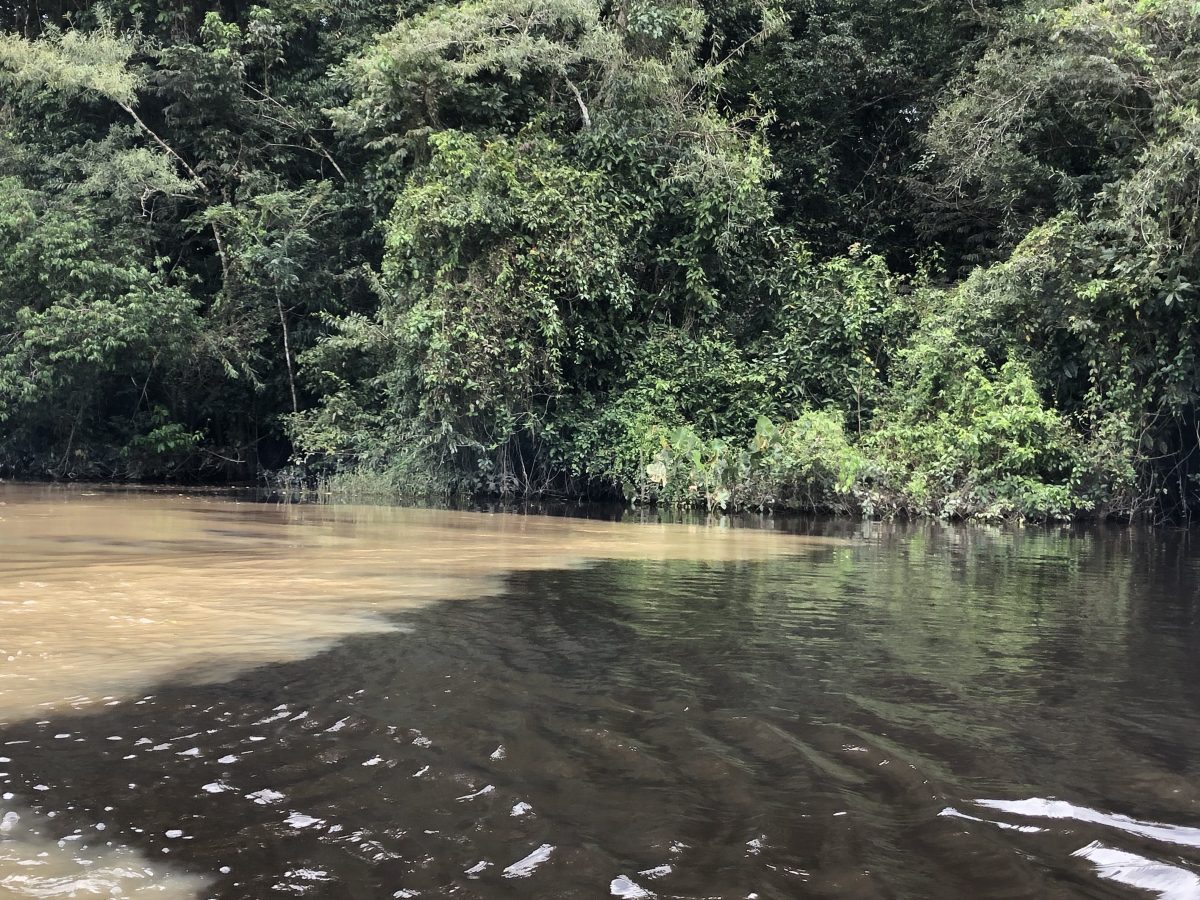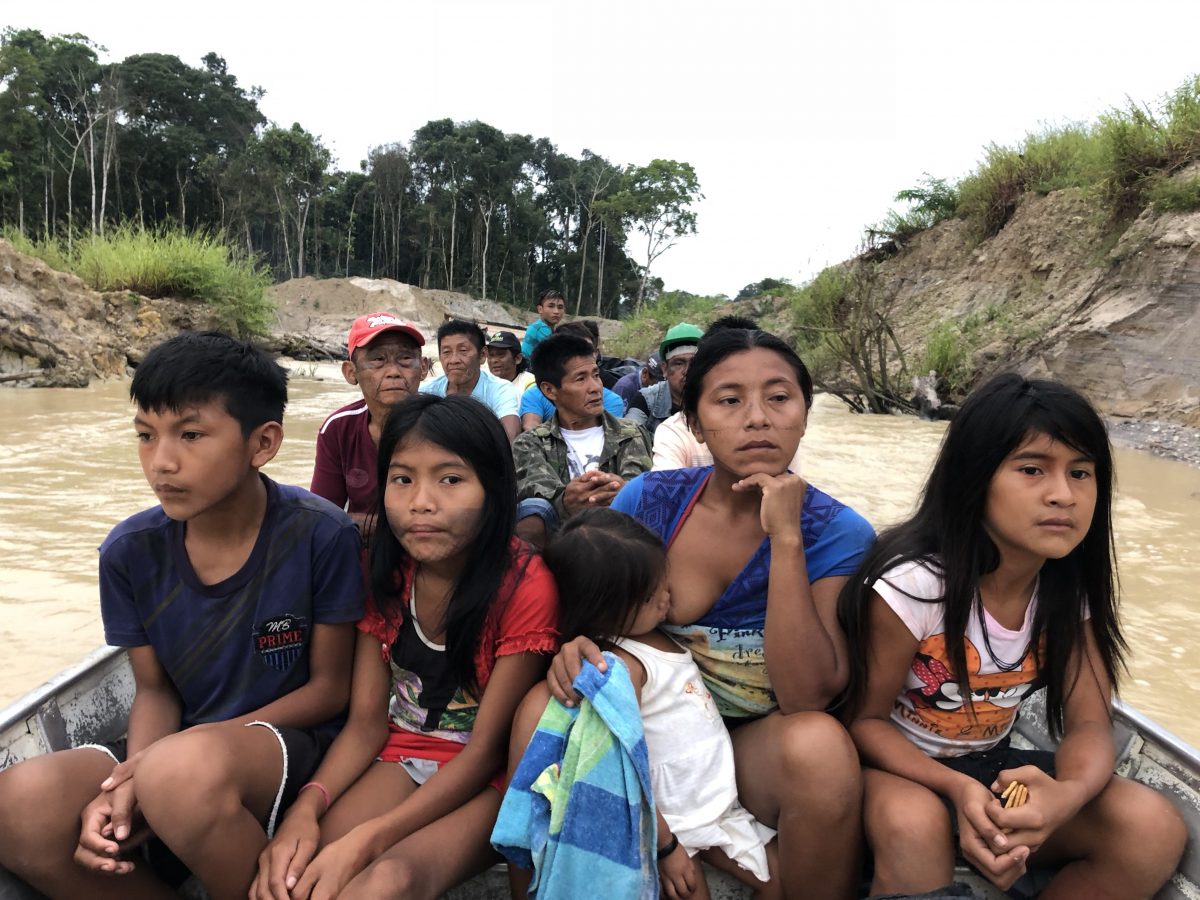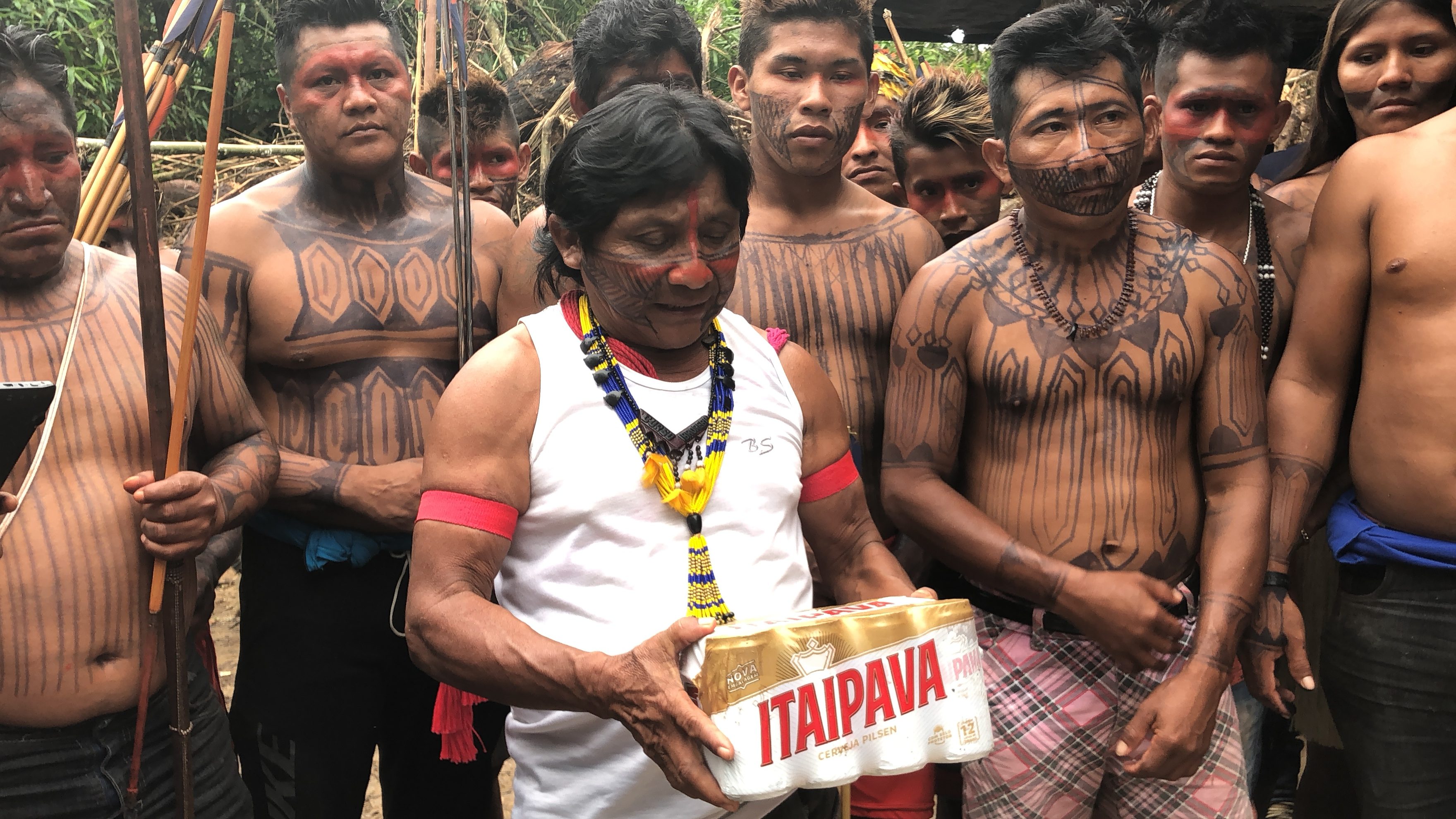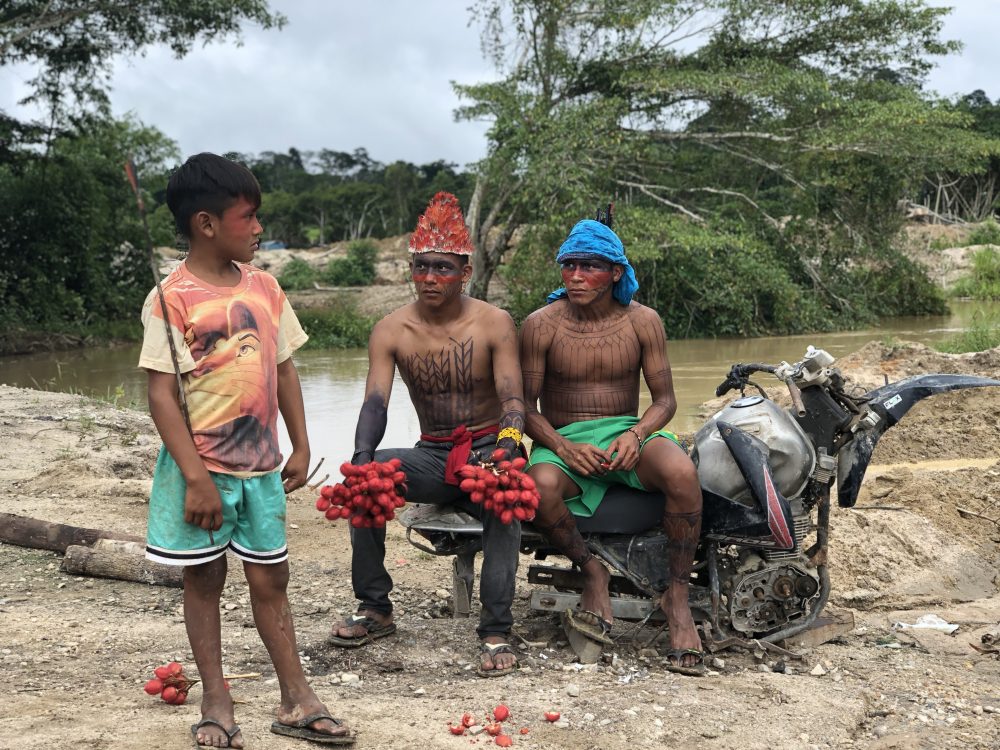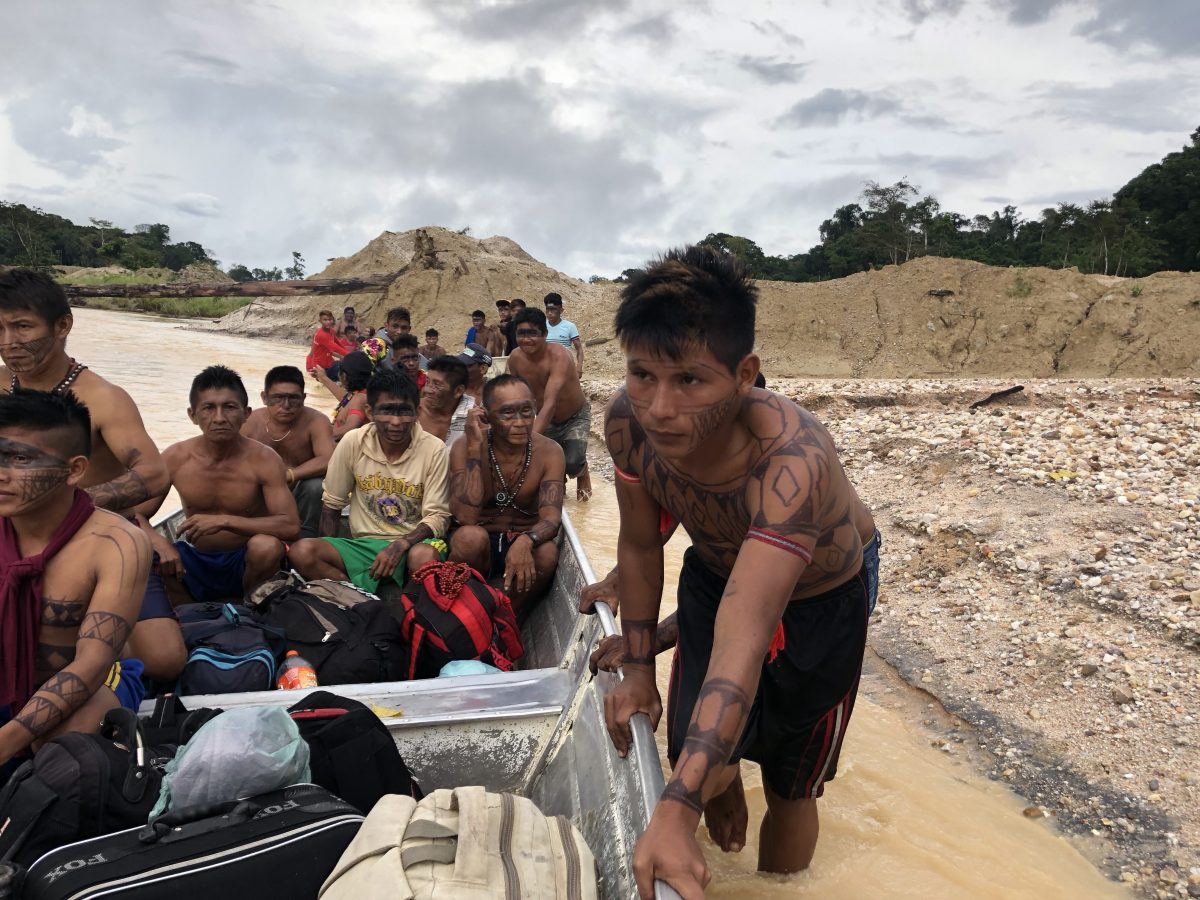In 1996, Osvaldo Wuaru and his family arrived on the outskirts of the vast Munduruku Amazon Territory with a crucial mission: set up a village to hold back the invasion of pariwat (non-indigenous) gold miners. Twenty-one years later, it has all but failed.
Named Watch Post (the Portuguese acronym is PV), the village has been swallowed by the heavy equipment of hundreds of illegal gold miners (called garimpeiros). What was once a few huts hidden in the Amazon forest now resembles a bombed battlefield.
In January, this reporter was the only non-indigenous member of a warrior party sent to PV Village to reclaim it from the miners. The expedition navigated the entire 226km length of the Tropas River.
For the Munduruku, the Tropas is now a dead river, muddy and toxic with mercury. Around PV Village, the waters are lined by strips of barren land, fallen trees, huge holes dug by excavators, scattered huts and unpaved roads used by motorcycles, tractors and quadbikes.
“Game used to be very easy here – pig, deer, tapir. But it is all gone due to the machines and pollution. Now, only one stream still has fish, but they are all sick from mercury”, said 70-year-old Chief Osvaldo, in a conversation inside his hut, which remains in the village. “This damage will remain forever.”
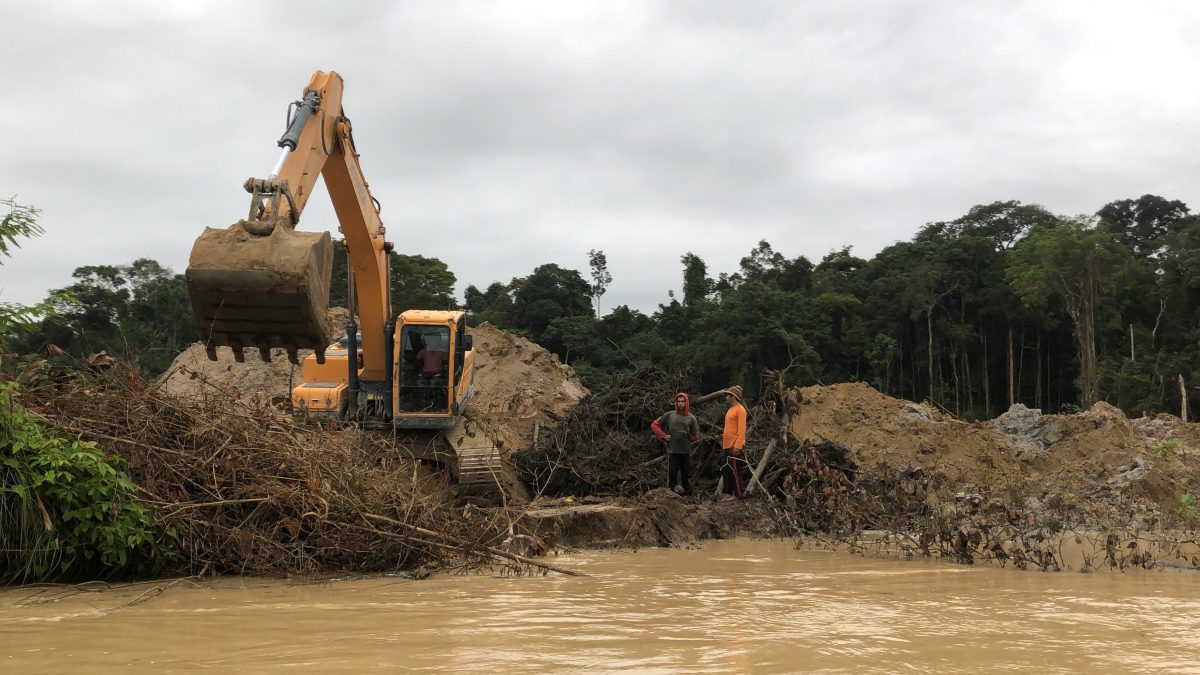
There is even an airstrip, where single-engined aeroplanes make around 10 flights a day to Creporizão town, 25 minutes away. The air bridge transports fuel, food, liquor, illegal drugs, mechanical parts, mercury, sex workers, merchants – and a lot of gold.
Despite the industrial scale, the whole process is illegal. According to Brazilian law, mining in indigenous lands is a federal crime. In practice, though, large swaths of the Amazon, including federal protected areas, have increasingly become stateless zones dominated by gold, land-grabbers and criminal timber rings.
The direct impact of mining on Brazil’s out-of-control deforestation is small in comparison to clearing for pasture, but it is not negligible and is increasing. Between 2016 and 2017, the number of illegal mines discovered in the forest by the official radar monitoring system rose from 382 to 949.
The Tapajós basin, one of Brazil’s largest gold reserves, is now a hotspot for deforestation. Federal police and environmental agents are outnumbered and hampered by budget restraints.
Whole cities’ economies now depend on illegal, environmentally-damaging activities, capturing local politics and gaining social acceptance. Itaituba, a city of 98,000 people, elected a former gold miner as mayor. It even has a “gold street”, where the metal is sold openly despite its illegal origin.
The result is a breakdown between federal and local enforcement. When illegal garimpeiros burned two government environmental offices to the ground in Humaitá, state governor Amazonino Mendes sided with the miners.
In indigenous lands, the void left by the state is even more dramatic. In the 23,820 square kilometre Munduruku indigenous territory, which is the size of Belize, Brazil’s federal indigenous bureau Funai maintains only one employee.
